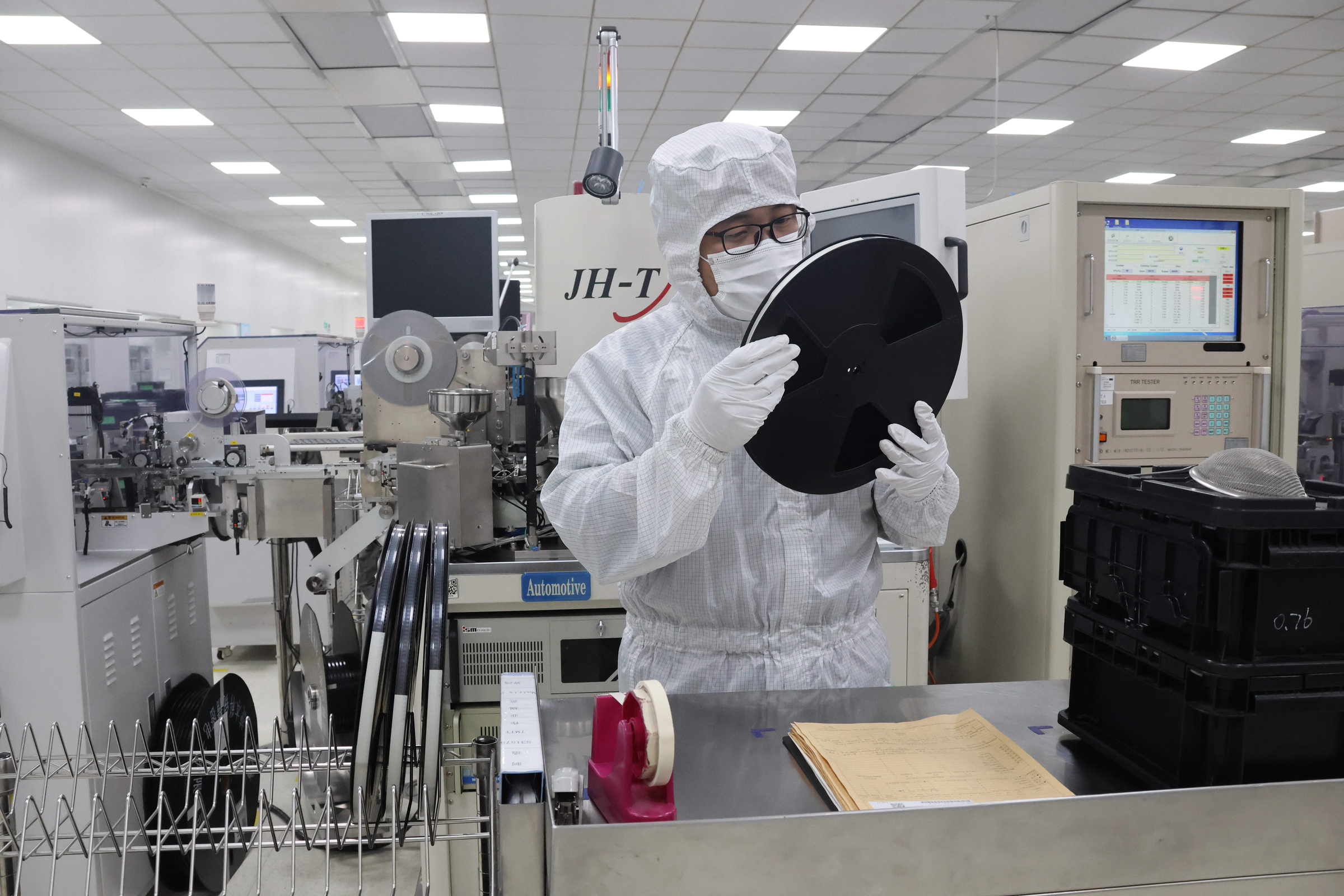China's National Bureau of Statistics reported a manufacturing PMI of 49.4 for August. The PMI is measured on a scale of 0 to 100, with 50 separating expansion from contraction. This marks the fifth consecutive month the index has been below 50, indicating continued decline in the sector.
However, the rate of contraction slowed compared to July, when the PMI was 49.3. Sub-indices measuring production, new orders, and inventories all saw slight increases. The employment sub-index, however, continued to decline.
 |
A worker at a semiconductor factory in Xinzhou, Shandong, China, 15/1. Photo: Reuters |
A worker at a semiconductor factory in Xinzhou, Shandong, China, 15/1. Photo: Reuters
Zhao Qinghe, a senior statistician at the National Bureau of Statistics, noted that alongside the improvement in manufacturing, the non-manufacturing PMI rose from 51.1 to 51.3, suggesting continued improvement in overall economic sentiment.
Zhang Zhiwei, chief economist and president of Pinpoint Asset Management, suggested that the macroeconomic outlook for the rest of the year "largely depends on how long exports can be maintained and whether fiscal policy becomes more supportive in Quarter IV".
The August PMI figures come weeks after US President Donald Trump extended a reprieve on a sharp increase in tariffs on Chinese goods by 90 days. However, tariff uncertainty continues to loom over the world's second-largest economy.
China's Ministry of Commerce stated that Vice Premier Liu He visited the US from 27/8 to 29/8 to discuss bilateral economic and trade relations.
Liu met with representatives from the US Treasury, Commerce Department, and the Office of the US Trade Representative to exchange views on the implementation of previous agreements. He emphasized that both sides should adhere to the principles of mutual respect, peaceful coexistence, mutually beneficial cooperation, managing differences, and expanding cooperation through equal dialogue.
Phien An (AP, Reuters, SCMP)












